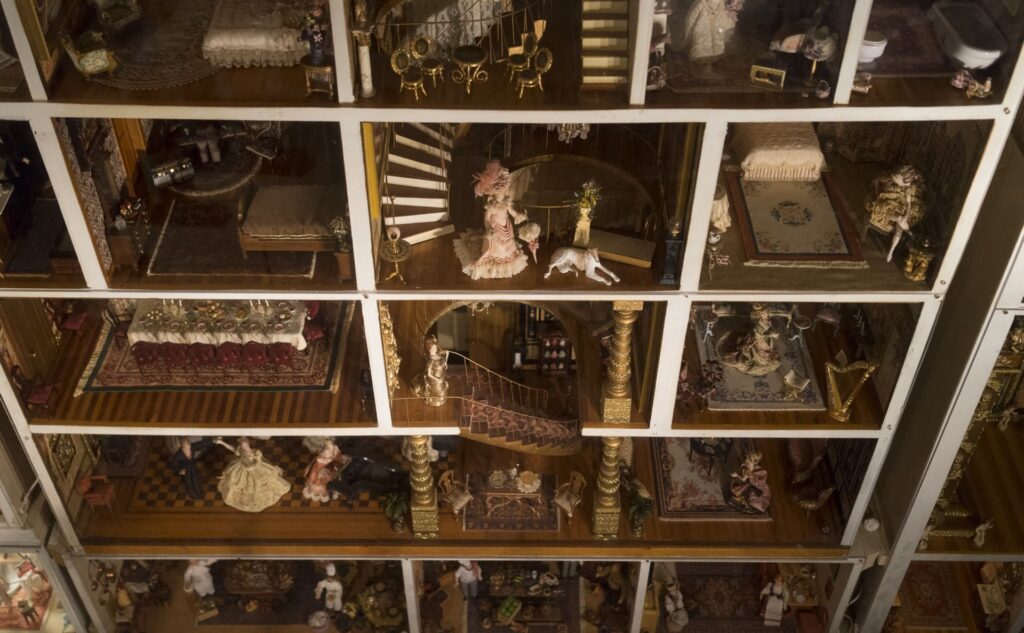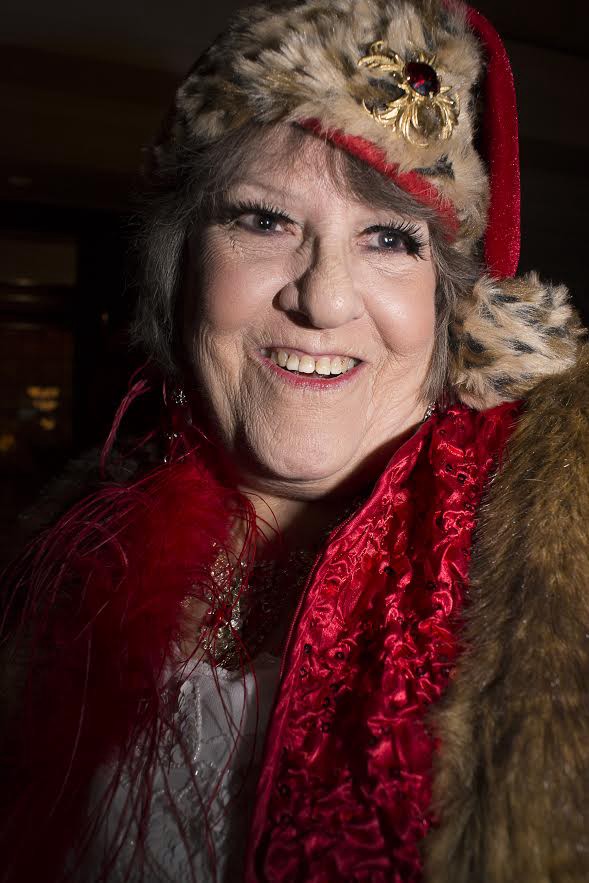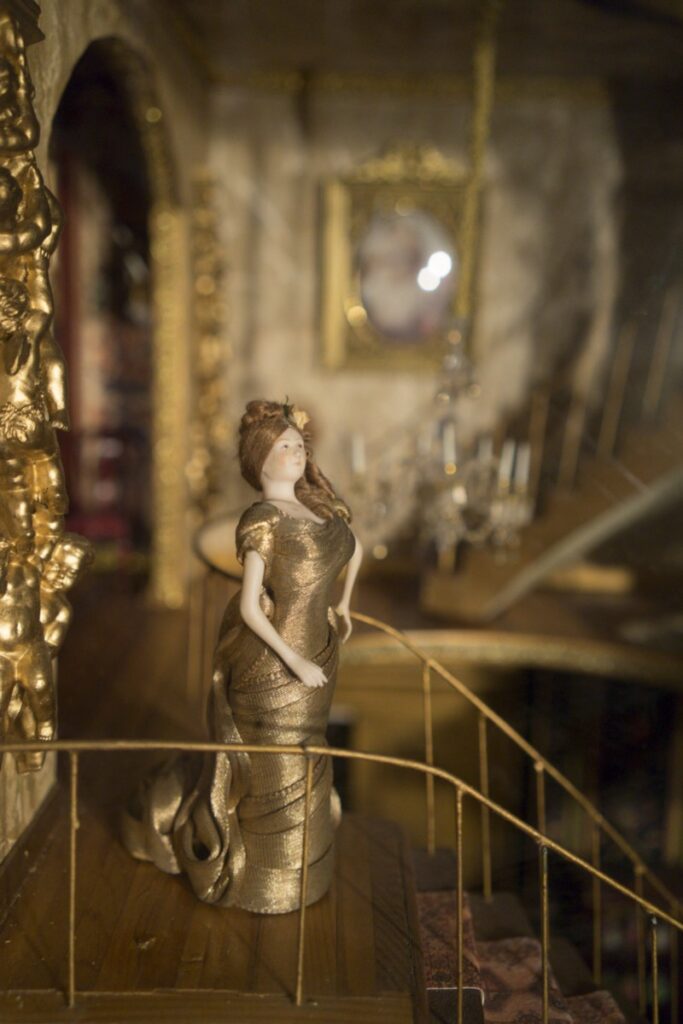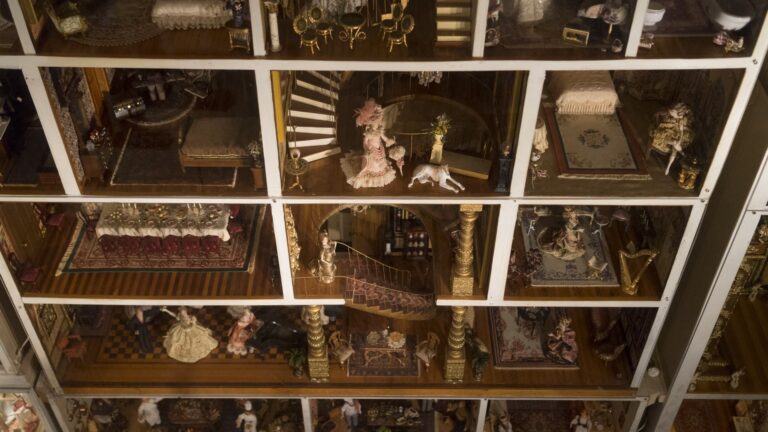

I had been in New Orleans for two days when I met the woman with the great eyelashes. After years of photographing strangers, my approach had been honed to telling people directly what I am doing and why I like them. I had seen her walk into the Hotel Monteleone, famous for the rotating carousel bar, with a group of Red Hat Society women. The women of the society, all 50 years and older, wore clothes fashioned from a quote from a Jenny Joseph poem. “When I am an old woman, I shall wear purple, with a red hat which doesn’t go and doesn’t suit me.” The women were hooting and hollering and having a blast. When I caught up with the heavily-eyelashed woman, I expressed my admiration for how amazing she looked and how much I loved her eyelashes. She leaned in and said, “you can buy a pair right down the street!” and laughed heartily.
She was so secure, so herself. I thought to myself—I should retire to New Orleans because the older women here are amazing. Like many others before me, this short jaunt to New Orleans, a city I previously knew almost nothing about, had gotten under my skin. The thought stayed with me and I decided—why wait until I retire?—and packed up all my belongings in a 4’x8’ trailer and moved to New Orleans about three months later.
— — -
I rang the doorbell of the grand mansion on Saint Charles. A compact, polished women came to the front door in a hustle and welcomed me to the House of Broel. Minutes later, two young women in head to toe black, joined the tour. Bonnie showed us around the first floor—her current endeavor—doing grand wedding receptions. She then took us up the stairs to her beloved dollhouse collection that filled the entire second floor. They were elaborate with so many things to look at. I glowed with delight finding the little cats and dogs patiently placed throughout all the houses. The one in the hallway was inspired by her father, who came over from Russia before WWI, is floor to ceiling with so many paintings and gorgeous dolls. We ascended to the third floor to her fashion museum filled with dresses made for socialites and celebrities. She advised us to watch our feet and not step on any of the elaborate trains. My size eleven shoes felt gigantic around the ornate gowns.

As we walked around the dresses one of the young women asked, “do you still do dollhouses?” She quickly answered “no.” When we headed back down to the ground floor, the same woman asked, “do you ever make dresses now?”. She said “no, now I do wedding receptions.” Seeing the phases of her life, literally as different floors, was hard to imagine for the twenty year old women—it seemed so separate, so like giving up on one thing for the next. Women, so often, live life in what seems like segments, rather than a flowing narrative. We don’t often “move up the ladder”, instead we have that time when “I lived in Tennessee and was a professor” and then seemingly do something unrelated next. I think there are definitely systematic things at work, but also I think as women we can feel our new selves, our more secure selves, our best selves, and can take a calculated risk to do the next thing—which doesn’t look like the logical thing from the outside.
Bonnie didn’t talk too much, but I picked up on some of the joys and sorrows that brought her to each place. Katrina scattered her seamstresses all over the country to never return, she was able to become an ordained interfaith minister, her son grew up and didn’t delight at the dollhouses any more, she knew there was potential in the rotted mansion on Saint Charles, there was that one guy who had the big ranch that is no longer in the picture so the western wear went in the museum, and countless other tales. Being 39 years old, excited to see what my 40s are like (and 50s and 60s and 70s…) I didn’t see her life in segments. I saw that she became more secure, more forgiving of herself, more confident, more her. She knew how to keep moving. I am lucky to live in New Orleans.
Originally published in Catahoula, 2016.
